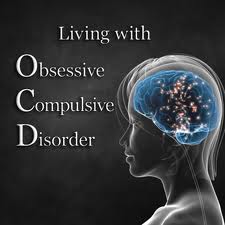An innovative family-focused treatment program for complex cases of pediatric obsessive-compulsive disorder that looked promising in a randomized, controlled pilot trial of 20 families has now accumulated experience with 35 families.
“We’re getting increasingly confident that we may have something here,” Tara S. Peris, Ph.D., said at the annual meeting of the American Academy of Child and Adolescent Psychiatry.
Tara S. Peris, Ph.D.
A larger study is being planned of the adjunctive positive family interaction therapy (PFIT), which families in the prospective pilot study seemed to embrace. The study recruited families based on a primary diagnosis of pediatric obsessive-compulsive disorder (OCD) and an assessment of poor family functioning, and then randomized them to receive six sessions of standard therapy with individual child cognitive-behavioral therapy (CBT) or to standard therapy plus PFIT.
Seven of 10 patients in the PFIT group and 4 of 10 in the control group responded after six treatment sessions, as assessed on the Clinical Global Impressions of Improvement (CGI-I) scale by blinded raters. The 40% response rate in the control group “parallels what’s in other studies,” noted Dr. Peris of the Semel Institute for Neuroscience and Human Behavior at the University of California, Los Angeles.
On the Children’s Yale–Brown Obsessive Compulsive Scale (CY-BOCS) of symptom severity, 5 of 10 patients in the PFIT group achieved remission, compared with 2 of 10 in the control group, reported Dr. Peris and her colleague at the institute, John Piacentini, Ph.D. (J. Clin. Child. Adolesc. Psychol. 2012 [doi: 10.1080/15374416.2012.673162]).
No families dropped out of the study, and 16 of the 20 families completed 3 months of follow-up. Youths in both groups maintained any gains at the 3-month follow-up. In the PFIT group, mothers and fathers attended 95% of the family therapy sessions together, and among PFIT families with siblings of the youth with OCD, 6 brought a sibling to at least one session.
CBT alone is the front-line treatment for mild to moderate pediatric OCD, “but we’re not here to talk about those kids,” Dr. Peris said. Previous studies have shown that 46%-79% of youths with OCD fail treatment with CBT, medication, or a combination of the two, depending on the treatment.
The study targeted treatment-resistant patients who also had dysfunctional families, which previous data identified as a predictor of poor response to CBT treatment for OCD.
Dr. Peris and her associates earlier identified three characteristics of dysfunctional families that interfere with a family’s ability to stop accommodating OCD symptoms: blame, family conflict, and poor family cohesion. These factors have an additive effect: only 14% of youths in families with all three factors responded to CBT, compared with 93% in families with none of these characteristics, Dr. Peris reported (J. Consult. Clin. Psychol. 2012;80:255-63).
“These features argue for some degree of family intervention in pediatric OCD treatment,” she said.
PFIT aims to reduce hostility and blame, increase family cohesion, and reduce OCD accommodation to enhance the efficacy of exposure-based CBT. “None of this is meant to blame parents or families. They’re doing their best. We try to give them better ways to cope,” she said.
Previous family interventions tended to rely on psychoeducation, with limited success in changing family dynamics, she noted. PFIT provides psychoeducation but also focuses on increasing parental self-efficacy (the sense that one is able to produce and regulate events in one’s life), providing parents with skills training in emotion regulation (including calm disengagement from challenging OCD episodes), and improving parenting skills such as scaffolding (recognizing the level of skill the child has mastered, and thinking of one level beyond that).
PFIT also addresses broader family dynamics, including reducing criticism, promoting positive problem-solving as a family, increasing cohesion, and creating a common language for communicating about OCD symptoms.
In the study, mothers in the PFIT group reported significantly lower levels of blame at week 24, compared with mothers in the control group. The PFIT families showed significant decreases in accommodation, blame, and family conflict, Dr. Peris reported.
“PFIT may be a better strategy than standard CBT for complex cases of OCD,” she said.
Dr. Peris reported having no financial disclosures.
